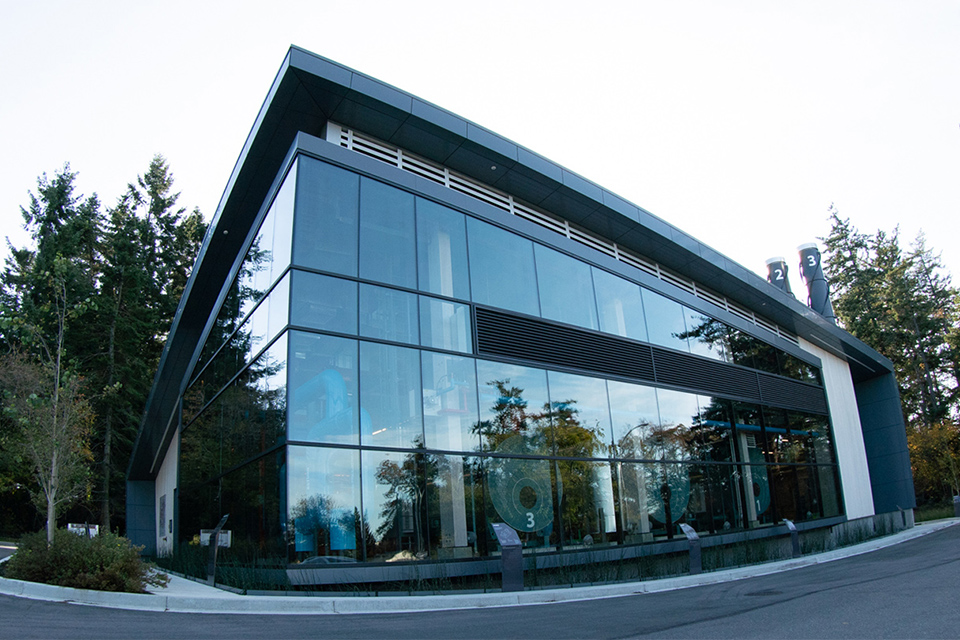Shifting weather patterns and extreme events necessitate climate resilience and adaptation

The National Oceanic and Atmospheric Administration officially announced that July 2021 had the highest average monthly temperature ever recorded. At the end of June, temperatures in Victoria approached 40°C. Stores shut their doors, schools cancelled classes, and AC units were the hottest commodity. This heat wave was merely a glimpse of what is to come. Whether we like it or not, the climate is changing and more extreme weather events are expected.
Victoria is no exception to the climate crisis and UVic is adapting.
Many universities have been focused on research and mitigation —– a role that cannot be discounted. Since 2010, UVic has achieved a net zero emission of GHGs. The university is currently in the process of developing a new strategic framework with goals to increase the campus’ sustainability, advance climate research, and cultivate education. A draft will be released next term for community input and feedback.
However, adapting to the changing climate is also critical. While experts and university representatives say UVic is in a relatively strong position, questions remain about how the university will adapt to certain climate events.
According to Mike Wilson, UVic’s director of campus planning and sustainability, the university has been working with the Ministry of Environment and Climate Change Strategy to form a Climate Preparedness and Adaptation Strategy.
School of Earth and Ocean Sciences assistant professor Hansi Singh emphasized the importance of climate adaptation. According to Singh, there is already almost enough greenhouse gases (GHGs) in the atmosphere that the climate will likely reach 2.5°C above pre-industrial levels and nobody is willing to stop emitting.
The slightest warming has major consequences on weather patterns. Institutions like universities will need to assess their exposure and vulnerability to these events and increase their resilience.
As the climate warms, springs will become drier but storms will become wetter and more intense. Luckily, UVic itself is in a fairly good spot. It is not in hurricane territory and despite its proximity to the coast, Singh says rising sea levels are “not an issue for UVic in particular because UVic is located sufficiently high enough that I don’t think that is going to be the major thing.”
Currently, the university has protocols and emergency management programs to respond and recover from unexpected weather events like severe storms.
Extreme heat-related events, similar to the one that occurred in July, will likely become more common. When building new facilities, the university does take the future climate into consideration, including extreme heat. Plans for the New Student Housing and Dining Project were made to accommodate the projected typical weather conditions in 2050 and 2080. The project team focused on optimizing the energy that would be required to maintain a comfortable temperature and decarbonizing the building energy systems. The project implemented strategies including heating water electrically and reducing heat loss from pipes that will result in an 88 per cent reduction of the GHG emissions related to the process of heating water.
For B.C., one of the big concerns is wildfires. Earth and Ocean Sciences professor Ed Nissen says the intensity, frequency, and length of the fire season is expected to increase, a trend that can be largely attributed to climate change. Extreme events like wildfires can also have a cascading influence; they are a hazard themselves but also have catastrophic effects on air quality and the vegetation of the landscape. If a fire is followed by a torrential rainstorm the charred debris on hillslopes can be mobilized producing mudflows. This was the case in Montecito, California which was devastated by mudslides after the Thomas Fire in 2018, resulting in at least 20 fatalities.
UVic’s proximity to municipal fire services and distance from major hillsides suggests that poor air quality will likely have a larger impact on the health and safety of those on campus.
Although the course UVic takes to adapt is not clear, the science around climate change points to detrimental effects of not adapting to the climate crisis. From air quality issues to extreme heat, UVic will have to prepare for these impending challenges.
“Either we are going to have to pay for it in lives or we going to have to pay for it in making these facilities better and more resilient,” said Singh.








